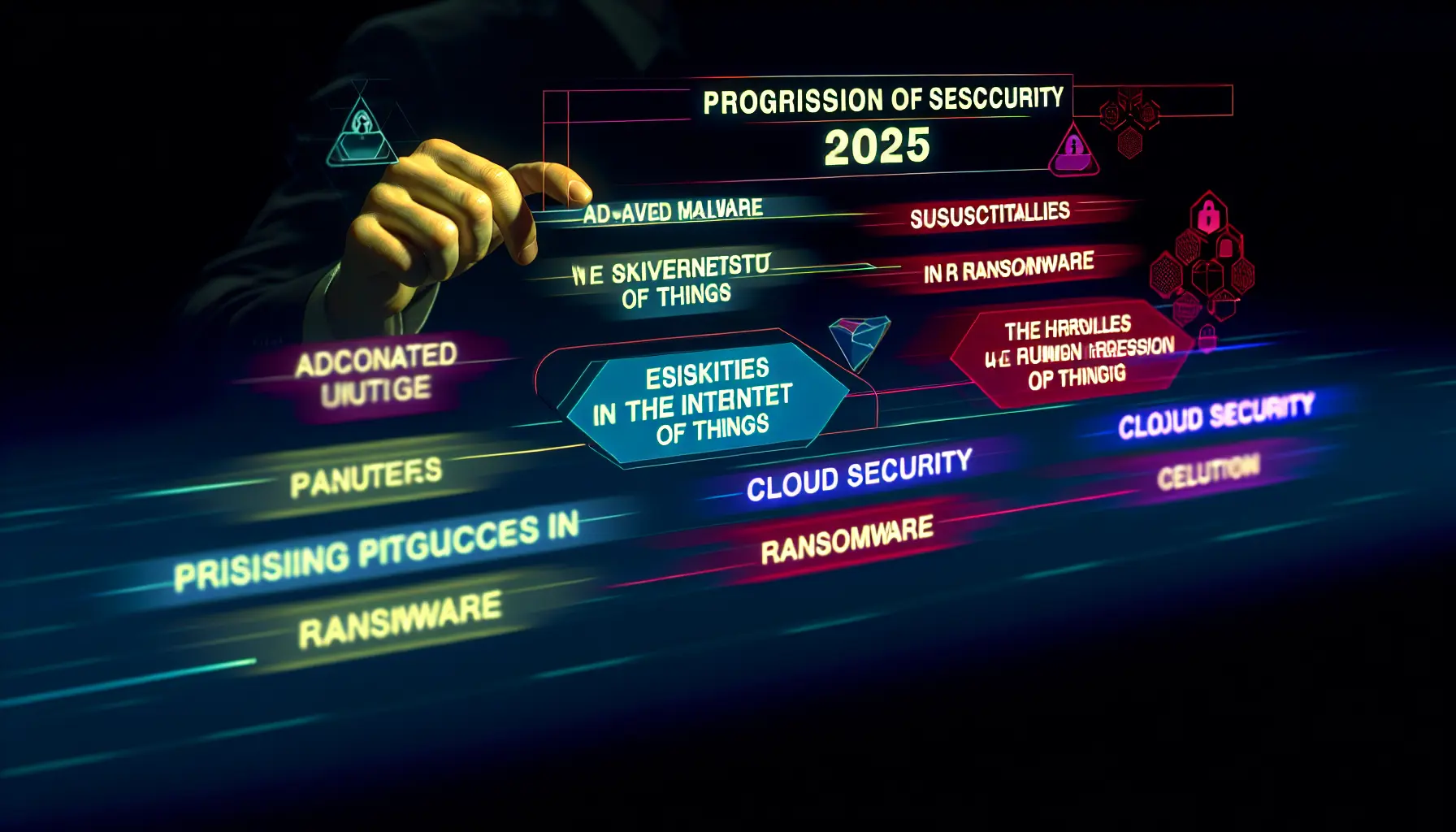
Cybersecurity Threats 2025: A Complete Guide to Emerging Risks and Prevention
Estimated reading time: 12 minutes
Key Takeaways
- AI-Powered Threats: Cyber attacks leveraging artificial intelligence are becoming more sophisticated and harder to detect.
- IoT Vulnerabilities: The proliferation of IoT devices introduces new security risks due to weak default settings and insufficient encryption.
- Ransomware Evolution: Advanced ransomware tactics like double extortion are targeting critical infrastructure.
- Cloud Security Risks: Misconfigurations and identity management issues in cloud environments pose significant threats.
- Preventive Measures: Implementing zero trust architectures and employee training can significantly reduce breach incidents.
Table of Contents
- The Shifting Landscape of Digital Security
- Key Cybersecurity Threats Reshaping Digital Defense
- Emerging Threat Patterns and Prevention Strategies
- Practical Prevention Measures
- Action Steps for Enhanced Security
- Conclusion
- Frequently Asked Questions
The Shifting Landscape of Digital Security
Digital threats are becoming increasingly sophisticated, with cybercriminals leveraging advanced technologies to breach even the most secure systems. As we look toward 2025, organizations and individuals face unprecedented challenges in protecting their digital assets. Understanding these emerging cybersecurity threats and implementing effective prevention strategies has never been more critical.
Key Cybersecurity Threats Reshaping Digital Defense
AI-Powered Attack Vectors
Artificial intelligence has revolutionized cyber attacks through adaptive malware that learns and evolves to bypass traditional security measures. These AI-driven threats can:
- Automatically generate convincing phishing campaigns
- Modify attack patterns based on defense responses
- Identify and exploit system vulnerabilities faster than human attackers
Recent data shows a 300% increase in AI-powered cyber attacks compared to previous years. [Source]
To better understand the role of AI in these threats, refer to our Artificial Intelligence Explained: A Complete Guide to Understanding AI.
IoT Device Vulnerabilities
The explosion of Internet of Things (IoT) devices has created numerous entry points for attackers. Security challenges include:
- Weak default security settings on consumer devices
- Limited update capabilities for embedded systems
- Insufficient encryption protocols
Statistics indicate that 67% of IoT devices lack adequate security measures. [Source]
Emerging Threat Patterns and Prevention Strategies
Advanced Ransomware Tactics
Modern ransomware attacks employ sophisticated strategies:
- Double extortion techniques
- Targeting critical infrastructure
- Supply chain compromise methods
The Colonial Pipeline incident demonstrated how ransomware can disrupt essential services and cause widespread economic impact. [Source]
To protect against such threats, consider utilizing the Best Cybersecurity Tools: Top Picks and Expert Recommendations for 2024.
Cloud Security Challenges
Organizations face increasing risks in cloud environments:
- Identity and access management complexities
- Data exposure through misconfigurations
- Multi-cloud security coordination
Research shows that 90% of organizations experienced at least one cloud security incident in the past year. [Source]
For insights on selecting secure cloud platforms, review our Best Cloud Provider Comparison: AWS vs Azure vs Google Cloud.
Practical Prevention Measures
Zero Trust Implementation
Organizations must adopt zero trust principles:
- Verify every access attempt
- Implement least-privilege access
- Monitor network activity continuously
Companies implementing zero trust architectures report 50% fewer breach incidents. [Source]
To enhance your zero trust strategy, explore our Understanding Cloud-Native Architecture: Principles, Benefits, and Real-World Applications.
Employee Security Training
Human error remains a significant vulnerability. Effective training programs should include:
- Regular phishing simulation exercises
- Security awareness updates
- Incident response protocols
Organizations with comprehensive training programs experience 70% fewer security incidents. [Source]
Action Steps for Enhanced Security
Immediate Security Improvements
Take these steps to strengthen your security posture:
- Conduct a thorough security audit
- Update all systems and software
- Implement multi-factor authentication
- Review and update access controls
Long-term Security Strategy
Develop a sustainable security approach by:
- Creating incident response plans
- Establishing security metrics
- Building a security-aware culture
- Investing in automated security tools
Conclusion
The cybersecurity landscape of 2025 presents significant challenges, but organizations can protect themselves by understanding these threats and implementing appropriate prevention measures. Success requires a combination of advanced technology, trained personnel, and well-planned security protocols.
Start strengthening your security posture today by implementing these strategies and staying informed about emerging threats. Remember that cybersecurity is an ongoing process that requires constant attention and adaptation to new challenges.
For further reading and references, visit the provided source links throughout this guide.
Frequently Asked Questions
What are AI-powered attack vectors?
AI-powered attack vectors are cyber attacks that utilize artificial intelligence to enhance their effectiveness, such as adaptive malware that evolves to bypass security measures.
How can organizations protect against IoT vulnerabilities?
Organizations can protect against IoT vulnerabilities by enforcing strong security settings, regularly updating device firmware, and implementing robust encryption protocols.
What is the zero trust security model?
The zero trust security model is a framework that requires all users, inside or outside the organization, to be authenticated, authorized, and continuously validated before accessing resources.
Why is employee security training important?
Employee security training is crucial because human error is a common vulnerability. Training reduces the risk of breaches by educating staff on security best practices.
What immediate steps can enhance cybersecurity?
Immediate steps include conducting security audits, updating systems, implementing multi-factor authentication, and reviewing access controls.









